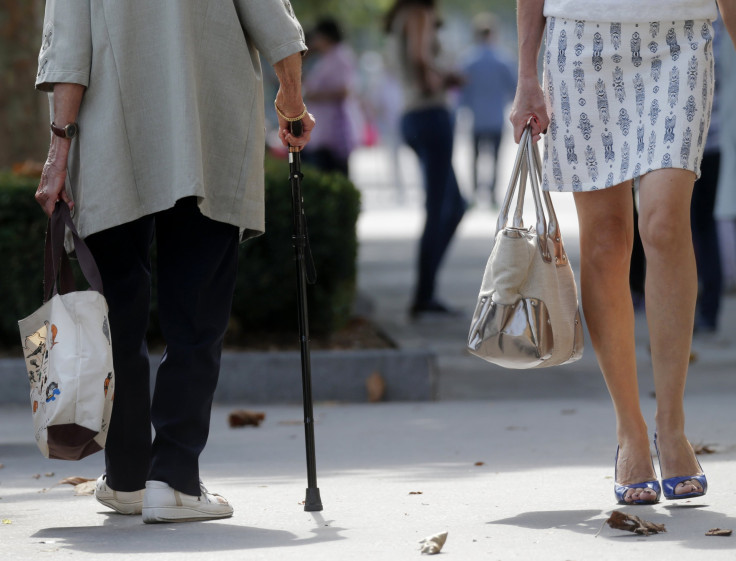Life Expectancy Increases Globally As Death Toll Decreases, But Depression And Diabetes Rise

While people generally live longer worldwide, a new study finds we spend more of our days in poor health. Across the globe, the rates of nonfatal diseases and injuries are declining more slowly than death rates.
In every country, low back pain and major depression rank among the top 10 causes of years lived with disability (YLDs). Both these conditions have increased by more than 50 percent since 1990, researchers say.
Joining forces to contribute to the Global Burden of Disease project, an international consortium of researchers examined the pattern and trends of nonfatal loss of health. Led by researchers at the University of Washington, the team accessed 35,620 distinct sources of data to estimate the burden of 301 diseases and injuries in addition to 2,337 related conditions for people around the world.
Some Progress
Tracking the numbers from 1990 to 2013, they found the total number of disability years increased globally from 537.6 million in 1990 to 764.8 million in 2013. Per person the number of years lived with a disability increased in 139 of 188 countries over the same 23-year period.
As a proportion of a total lifespan, in 1990 people spent about 21 percent of their time on earth disabled compared to about 31 percent in 2013 — nearly a third of life now includes some form of disabling condition, however severe or slight. In some ways, this represents progress as advances in medicine have increased survival rates for many diseases, including cancer.
Worldwide, men and women essentially shared the same leading causes of YLDs, including musculoskeletal disorders, mental and substance use disorders, neurological disorders, and chronic respiratory conditions, in 2013. However, schizophrenia ranked as a leading cause worldwide for men only, while other musculoskeletal disorders were significant only for women.
Globally, mental and substance abuse disorders caused one-fifth of all years lived with a disability during 2013, ranging from 15 percent in Germany to more than one-third (37 percent) in Qatar. Musculoskeletal disorders, combined with fractures and soft tissue injuries, also accounted for 20 percent of all YLDs in 2013, ranging as high as 30 percent in South Korea.
In sub-Saharan Africa, HIV/AIDS was a notable driver of increasing YLDs.
Which Conditions?
Worldwide, these 10 conditions represented the main contributors to disability during 2013:
- Low back pain
- Major depressive disorder
- Iron-deficiency anemia
- Neck pain
- Age-related and other hearing loss
- Diabetes mellitus
- Migraine
- Chronic obstructive pulmonary disease
- Anxiety disorders
- Other musculoskeletal disorders
During 2013, the 10 leading causes of disability for American men were:
- Low back pain
- Diabetes mellitus
- Major depressive disorder
- Other musculoskeletal disorders
- Chronic obstructive pulmonary disease
- Age-related and other hearing loss
- Anxiety disorders
- Neck pain
- Falls
- Iron-deficiency anemia
And for American women:
- Low back pain
- Other musculoskeletal disorders
- Major depressive disorder
- Anxiety disorders
- Neck pain
- Chronic obstructive pulmonary disease
- Diabetes mellitus
- Migraine
- Age-related and other hearing loss
- Alzheimer’s disease and other dementias
Source: Global, regional, and national incidence, prevalence, and years lived with disability for 301 acute and chronic diseases and injuries in 188 countries, 1990-2013: a systematic analysis for the Global Burden of Disease Study 2013. The Lancet. 2015.



























